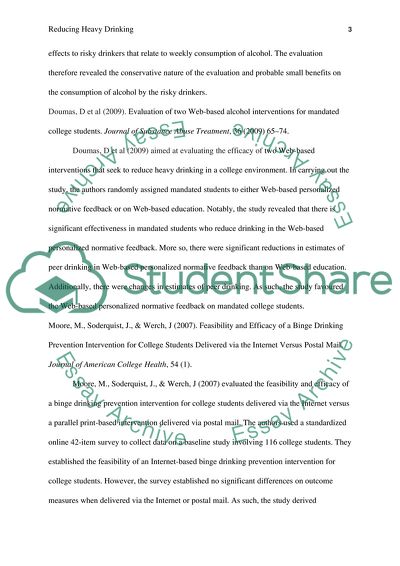Cite this document
(Evaluation of Proggrams Attempting to Reduce Heavy Drinking in a Essay Example | Topics and Well Written Essays - 1500 words, n.d.)
Evaluation of Proggrams Attempting to Reduce Heavy Drinking in a Essay Example | Topics and Well Written Essays - 1500 words. https://studentshare.org/health-sciences-medicine/1799122-literature-review-evaluation-of-proggrams-attempting-to-reduce-heavy-drinking-in-a-college-environment
Evaluation of Proggrams Attempting to Reduce Heavy Drinking in a Essay Example | Topics and Well Written Essays - 1500 words. https://studentshare.org/health-sciences-medicine/1799122-literature-review-evaluation-of-proggrams-attempting-to-reduce-heavy-drinking-in-a-college-environment
(Evaluation of Proggrams Attempting to Reduce Heavy Drinking in a Essay Example | Topics and Well Written Essays - 1500 Words)
Evaluation of Proggrams Attempting to Reduce Heavy Drinking in a Essay Example | Topics and Well Written Essays - 1500 Words. https://studentshare.org/health-sciences-medicine/1799122-literature-review-evaluation-of-proggrams-attempting-to-reduce-heavy-drinking-in-a-college-environment.
Evaluation of Proggrams Attempting to Reduce Heavy Drinking in a Essay Example | Topics and Well Written Essays - 1500 Words. https://studentshare.org/health-sciences-medicine/1799122-literature-review-evaluation-of-proggrams-attempting-to-reduce-heavy-drinking-in-a-college-environment.
“Evaluation of Proggrams Attempting to Reduce Heavy Drinking in a Essay Example | Topics and Well Written Essays - 1500 Words”. https://studentshare.org/health-sciences-medicine/1799122-literature-review-evaluation-of-proggrams-attempting-to-reduce-heavy-drinking-in-a-college-environment.


